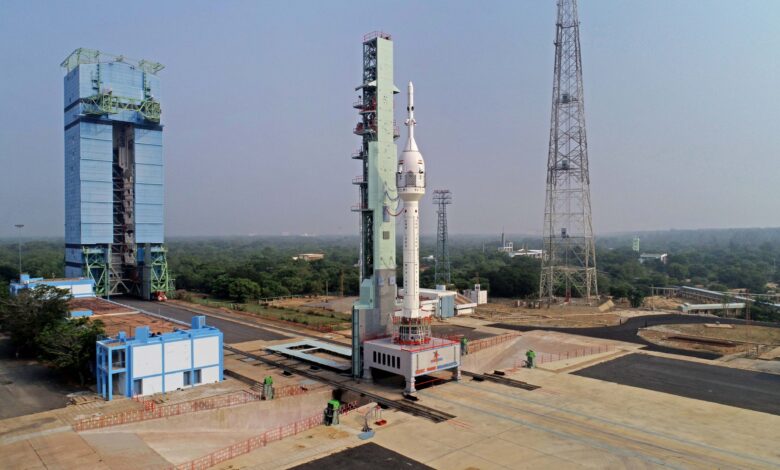ISRO to Launch Test Vehicle for Maiden Human Space Flight Program

The Indian Space Research Organisation (ISRO) is gearing up for its maiden human space flight program, and the test vehicle mission, known as TV-D1, is scheduled to launch between 7 am and 9 am on October 21, 2023.
The mission is defined as an “In-flight Abort Demonstration of Crew Escape System (CES)” at Mach number 1.2. It includes the newly developed Test Vehicle, followed by Crew Module separation and safe recovery.
Mission Objectives:
- Flight demonstration and evaluation of Test Vehicle sub-systems.
- Flight demonstration and evaluation of the Crew Escape System, including various separation systems.
- Crew Module characteristics and deceleration systems demonstration at higher altitudes and its recovery.
The test vehicle is a single-stage, liquid-propelled rocket, equipped with a modified VIKAS engine. It carries the Crew Module (CM) and Crew Escape System (CES) mounted at its fore end.
The CM is the pressurized environment where astronauts will be housed during the Gaganyaan mission. For the Test Vehicle Abort mission-1 (TV-D1), an unpressurized CM version is used. It has completed integration and testing and is ready to be transported to the launch complex. The CM, which emulates the size and mass of the actual Gaganyaan CM, contains systems for deceleration and recovery, including parachutes and recovery aids actuation systems. The avionics systems in the CM are in a dual redundant mode configuration for navigation, sequencing, telemetry, instrumentation, and power. After touchdown in the Bay of Bengal, a dedicated vessel and diving team from the Indian Navy will recover the Crew Module.
The first development flight Test Vehicle (TV-D1) is in its final stages of preparation. The payloads include the Crew Module (CM) and Crew Escape Systems (CES), featuring fast-acting solid motors, CM fairing (CMF), and Interface Adapters. This flight will simulate an abort condition during the ascent trajectory, equivalent to a Mach number of 1.2, which would be experienced in the Gaganyaan mission. The CES with CM will be separated from the Test Vehicle at an altitude of about 17 km. Subsequently, the abort sequence will be executed autonomously, including the separation of CES, deployment of a series of parachutes, and the safe touchdown of CM in the sea, approximately 10 km from the coast of Sriharikota.
The Crew Module underwent various electrical tests at ISRO’s Bengaluru facility, including an acoustic test, before being dispatched to the Satish Dhawan Space Centre (SDSC-SHAR) on August 13. At SDSC, the CM will undergo vibration tests and be pre-integrated with the Crew Escape System before the final integration onto the Test Vehicle at the Launch Pad. The success of this test flight is crucial to the overall Gaganyaan program, leading to the first Gaganyaan mission with Indian astronauts following further qualification tests and unmanned missions.







